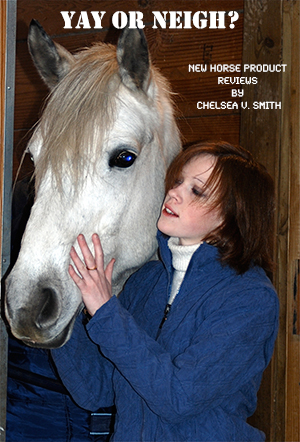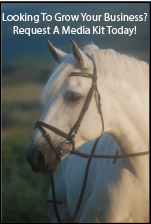Writing and Filming Horses Takes Knowledge
By Nikki Alvin-Smith

If you’re a horse person and have groaned out loud when watching a TV show or film as an equine enters frame, it’s likely because the Sound Editor in the production process has added a whinny or neigh from said horse. Completely inappropriately timed and unlikely to have occurred at all, the neophyte DP or Showrunner simply doesn’t know horses.
Horse folk also love to see actors who can’t ride grabbing at reins and hauling on bits to balance. NOT. And horses tacked up in random mismatched English and Western tack is another favorite. Big studios like Disney really should get right the way a horse actually moves and gets up and down off the ground. The horse is not a cow. It doesn’t kick that way or move that way.
Similarly as an equine aficionado, other immediate turnoffs when discovering media entertainment comes along for horse owners that love to read. A horse jumps into the storyline and the author then brings forth a bunch of nonsense about what the horse is doing or how it is behaving, or how the horse is tacked up, what it likes to eat, how it drinks, or how it responds to stimuli including the aids for action in the saddle.
On film sets in theory there is a horse wrangler on set to point out the obvious follies. Sometimes they are not listened to and the DP produces a less than authentic horse scene. Cue the piles of hay placed next to the barn in paddocks brimming with thick grass to keep horses in the shot or fences made of barbed wire with horses grazing next to them.
Even TV shows that truly have nothing to do with horses such as the U.K. art show Fake or Fortune test the skill set of art dealer Philip Gould taking him on an unlikely trek into the hills to gaze across a vista that an artist may have painted.
A few years back, I was talking with an executive at a well-regarded Film Commission in regard to horses being available on set at our NYS QPF soundstage at our farm, and whether he believed advertising their availability to the industry and filmmakers like HBO and Hallmark that are in our area on an irregular basis was a good idea. He was quick to say that horses are readily available at any time. He can source them anywhere it really didn’t matter. Even in films or productions that include them it was common for an equid of some variety to be at hand without any hassle or special handlers or advice being needed.
Ah I thought. That explains a lot. Even up and coming filmmakers aren’t taught that horses do require some knowledgeable presentation if the storyline is to be believed.
Writing Script and Book
Most authors have heard the advice to write about what you know. When you add a horse(s) into your works it is essential that you have a clear understanding of how they operate including how it is to ride and care for one. If you don’t, then let’s hope your Editor will spot your blunders and edits will be made to correct the inaccuracies.
All writing content must be as authentic and accurate as possible to suspend disbelief of the reader. Just as you wouldn’t write that a dog can climb a fifty-foot tree you shouldn’t write that a horse slurps water like a dog or sips tea like your grandmother. And you certainly shouldn’t write that it was neighing as it was doing either.
Historical Works Include Horses
It is highly likely that if you are a writer of historical fiction horses will come into the plot at some juncture. Their use as agricultural horsepower, key use for transportation purposes across multiple lifestyles and daily toil and pleasurable pursuits such as foxhunting or horse racing were very much part of the culture of the day.
It would be weird in fact to write a book of an historical era and not include a horse somewhere in the word picture.
In my book, “The Dutchess of Chadwick,” I include horses and High Society life in the Gilded Age and devote a few chapters to life experiences of the protagonist on horseback as a means to foreshadow the character of other players. If my book ever goes to screen (and of course it would be truly wonderful if it was picked up for film or TV series production), I would certainly feel a need to retain some level of input into how scenes that involved horses were presented when rights to the work were conveyed.

I wouldn’t be pleased to see the Thoroughbred horse that she rides cast as a black Friesian for example, or her riding in an Australian saddle galloping on tarmac. And as for that random horse neighing, snickering and whinnying, well that would have to stop. Though a snicker at the right moment would be perfectly fine.
We can’t always be accurate in our writing and filming about everything all of the time. And I’m sure despite deep research I’ve made some errors in how I’ve presented some aspect or other in my book. But at least I’ve tried to be as accurate as possible and inform my audience to also help educate them as to how life truly might have been back in the day. Even if sometimes parts of it are cast in a romantic glow.
Artistic license notwithstanding, a shout out to those directors and producers and editors and writers that get it totally right. Like Clint Eastwood and the late Robert Redford. And to the actors that bother to take at least a few riding lessons before hitting the set and the saddle.
As a writer you are not going to be able to write about horses very well from just taking a walk on a trail horse on summer vacation or riding a donkey on the beach. Don’t be a donkey. Write about what you know. And if you don’t know, find an Editor that does. Whether that is an audio, screen or copy editor.



